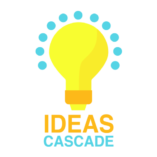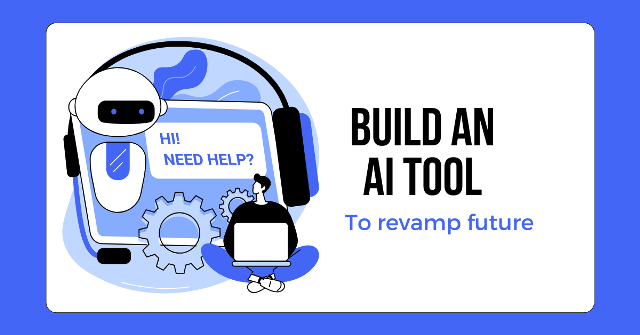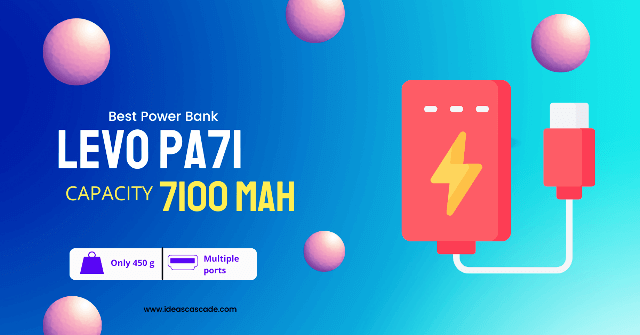The concept of Artificial Intelligence (AI) has, for a long time, fascinated the minds of scientists, engineers, and developers alike. With the evolution of machine learning, deep learning, and natural language processing, the horizons of AI have expanded infinitely.
For those seeking guidance on how to build AI tools from the ground up, you’ve come to the right place. This comprehensive guide will illuminate the path ahead. It will spotlight the necessary tools for crafting artificial intelligence and best practices for bringing your AI vision to life.
Understanding Artificial Intelligence
Before diving into the complex process of building Artificial intelligence based tools, let’s get familiar with the enigma that is AI. Artificial intelligence encircles a vast spectrum of domains such as machine learning, deep learning, neural networks, natural language processing, computer vision, and many more.
These technological marvels enable us to create intelligent software capable of data analysis, predictive modeling, decision making and interactive engagement with users.
How to Create an AI Tool From Scratch?
Let’s embark on a journey to fathom the art of developing an AI tool.
Defining the Purpose of Your AI Tool
The initial step in building an AI tool is to define its purpose. Ponder the question, “What problem can my AI tool resolve?” Understanding your tool’s specific utility is paramount. Whether it’s streamlining business processes or curating personalized recommendations, knowing its purpose will guide the entire process of the development of an automated tool.
Tailoring to the Target Audience and Use Cases
In sync with your target audience and their anticipated usage scenarios, tailor your AI tool. Adapting it to harmonize with user preferences is important, as it adds effectiveness and user-friendliness. Embedding feedback from users on use cases in the code builds their trust.
Gathering Data: The Base of AI
AI-powered tools thrive on data. Collecting and priming data is essential for building a precise data model. Dedicated teams of AI specialists often handle data labeling, scrutinizing input information carefully. The Cross-Industry Standard Process for Data Mining (CRISP-DM) is frequently employed to groom the collected data.
Selecting the Right Arsenal
Armed with a clear vision and data in hand, it’s time to pick the right tools. Python, renowned for its expansive AI library ecosystem, stands as a popular choice. Libraries like TensorFlow and PyTorch form the foundation for machine learning models. Jupyter notebooks facilitate the experimentation and prototyping of AI algorithms.
Crafting the AI Core
With tools at your disposal, it’s time to fashion the AI core. This involves coding AI algorithms in Python. Techniques spanning regression, classification, and clustering take center stage here. The process involves training your AI tool on the collected data, enabling it to recognize patterns and make predictive judgments.
Building AI’s cognitive skills is an exciting journey. You’ll create code that can analyze and interpret data, whether it involves image recognition, text processing, or decision-making. This is where the enchantment of AI unfolds.
Creating a user interface (UI)
To ensure accessibility for users, crafting a user interface (UI) is vitally important. The benefits are manifold.
- Ease of Use: A user-friendly interface simplifies interactions with the AI system.
- Visual Aid: An UI visualizes the AI system’s outcomes in a comprehensible manner.
- Customization: Tailoring the UI to match end-users’ unique needs enhances utility.
Testing and debugging
Assuring the accuracy and reliability of operation of algorithms is paramount. Thorough testing is essential for uncovering and rectifying errors or miscalculations. Employ debugging tools and techniques to navigate the intricate network of code when issues arise.
Deployment: Making AI accessible
Once your AI tool is battle-ready, it’s time to usher it into the hands of users. Deployment avenues include cloud-based solutions and on-premise setups. Your choice should align with your project’s demands and financial constraints.
Scaling and optimization
As your AI tool garners acclaim, it may encounter heightened workloads. Scaling your infrastructure becomes indispensable to accommodate a rapidly growing user base. Additionally, optimizing AI algorithms multiplies performance while suppressing resource consumption.
Monitoring and maintenance
The journey of your AI tool extends far beyond deployment. Vigilant monitoring is imperative to ensure uninterrupted operation. Regular enhancements and updates are essential to maintain relevance and competitiveness.
Can You Create Your Own AI Bot?
Embarking on a chatbot adventure with advanced algorithms, neural networks and machine learning is also an exciting experience for AI experts.
One exciting facet of AI applications lies in crafting chatbots. These virtual conversationalists engage users in natural language, answering queries, delivering information, and executing tasks. Here’s a step-by-step roadmap for fashioning your AI chatbot and elevating user interactions.
- Identify the chatbot type.
- Select the communication channel.
- Choose the technology stack
- Design conversational flows
- Train the bot
- Conduct rigorous testing
- Deploy the chatbot and maintain it
Demystifying the Cost of AI Tool Construction
The commercial aspect of AI tool development spans a wide spectrum. Factors such as complexity, data requisites, and development resources contribute to the variance in costs. Budgets can span from a modest sum for elementary tools to multi-million-dollar investments in the intricacies of AI systems.
When pondering building an AI tool, it’s imperative to factor in expenses related to hardware, software, data procurement, and potential cloud services. Delve deep into the expenses involved and explore cost-efficient tactics for adept project budget management.
How to Build AI Tools for Free?
After a comprehensive discussion on building an AI tool, let’s take a glimpse into the cost of crafting a free AI tool.
For those in pursuit of cost-free AI tool development, there exist open-source AI tools and libraries:
- TensorFlow
- PyTorch
- Scikit-learn
Open source tools and resources are available to developers and end users under the GPL and GNU licenses. Therefore, these resources offer an economical avenue for crafting AI solutions.
Conclusion
Crafting an AI tool represents an enriching voyage demanding dedication and continuous learning. The question, “how to build an AI tool?” holds countless answers waiting to be explored.
As you chart your course, armed with a clear purpose, refined data, adept tools, and untiring curiosity, you can contribute to artificial intelligence’s evolution. However, remember that the societal impact of AI is profound, necessitating responsible and ethical development and deployment.
Therefore, we encourage readers to delve deeper into AI development, acquaint themselves with the latest techniques and responsible AI practices. AI is being revamped in the near future. Soon it will be revealing wonders.



